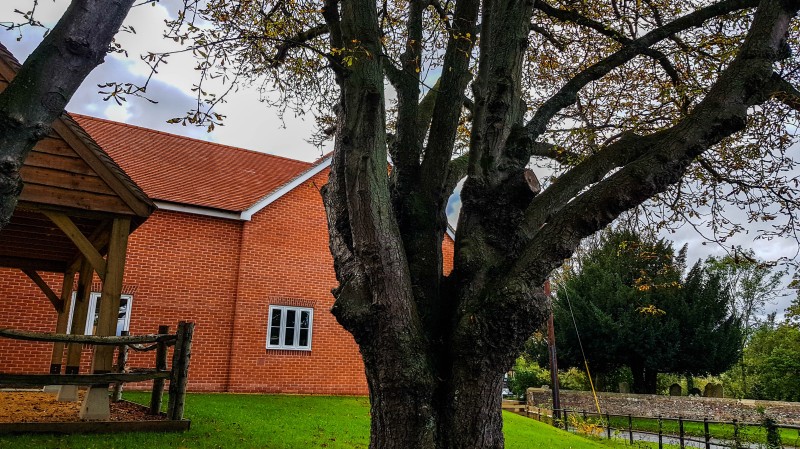You are here: Tree Preservation Orders
A Tree Preservation Order (TPO) is an order made by a local planning authority in England to protect specific trees, groups of trees or woodlands. Tree Preservation Orders are also used in Scotland, Northern Ireland and Wales, but slight differences in regulations may exist. A Tree Preservation Order is the tree equivalent of Listed Building Consent, which is required to make alterations to a listed building.

A Tree Preservation Order prohibits the felling, topping or trimming of trees without the local planning authority’s written consent. Even if consent is given, it can be subject to conditions which have to be adhered to. If permission is given to fell a tree which is protected by a TPO, the landowner has an obligation to replace that tree with another of an appropriate size and species, in the same place, as soon as can reasonably be expected. If the property or land is sold before the owner has replanted the tree, this duty passes to the new owner.
When the tree is replaced it is covered by the original TPO no matter what the new species is. The council should generally then update the TPO to make sure it covers any slight changes to the location or changes to the species. A Tree Preservation Order can be placed on any tree, it does not need to be an indigenous species. This includes trees which form part of a hedgerow, or the hedgerow itself if it is made up of a series of trees which have grown to a substantial height, but not hedgerows themselves. The removal of countryside hedgerows is regulated under The Hedgerows Regulations 1997 which were made under Section 97 of the Environment Act 1995 and came into operation in England and Wales on 1 June 1997. TPOs are most commonly placed on trees in urban and semi-urban settings, and for trees with high ‘amenity’ or ‘nature conservation value’. ‘Amenity’ in this instance can be taken as enhancement or enrichment of the area.
Because there are no hard and fast rules as to which species or size of trees can have a Tree Preservation Order it may be difficult to tell if a tree has been protected. Most local authorities have maps, which can be accessed via their website, you can check to see if a tree or wood has a TPO or is in a Conservation Area. If no map or list is available, or if there is any uncertainty, your local authority's arboricultural or tree officer will be able to add some clarity.
The responsibility for maintaining a tree which has a protection order attached to it lies with the owner of the tree, but maintenance on a protected tree should not be carried out without written consent from the local authority, who in turn, may not grant permission until any proposed works have been agreed with one of their arboricultural officers. Local authority arboricultural officers will always assist an owner in ensuring that a protected tree is properly managed. It is worth bearing in mind that anyone buying a property with a protected tree or trees on the property, will be deemed to have taken on the responsibility for manging those trees, as a change of ownership of a property and its associated trees has no effect on an existing Tree Preservation Order.
If you are minded to have a Preservation Order put on a tree or wood, you should firstly contact your Local Authority arboreal officer or planning department. Most local authorities will ask you to submit your request in writing or to complete an online form. Requests should include a map showing the location of the tree or trees that you wish to be protected, the tree species (the Woodland Trust have an App which would help with this if in any doubt), and the reason for your request for a TPO.
At that stage an arboreal officer from the local authority will visit the site and decide if the tree or trees warrant a Preservation Order. If the officer agrees with the need for a Preservation Order, he or she will prepare an order and inform all parties with an interest in either the tree or trees and the properties around the site. The order will then be served and the public informed. The initial order will be for a six month period, thus giving the trees immediate protection and if after that period there have been no justifiable objections, the order will become permanent.
Tree Preservation Orders are also used by local authorities to protect trees on sites where planning permission for development has been applied for. This ensures that developers cannot cut down trees with high amenity or nature conservation value when building new properties. The local authority will then add the protection of these trees as a condition of planning approval.
Mature trees, like historic and listed buildings add to the appearance of the landscape and as such, need to be looked after and protected so that future generations have the opportunity to appreciate them. Trees are also important as they provide homes for birds and various forms of wildlife, as well as being an important factor in the fight against climate change. Tree Preservation Orders help to ensure that we manage our trees in a proper and sustainable manner.
If you are thinking of buying or selling your home, you may find some of these services useful:
Arboricultural Surveys
To assess trees growing near to properties
Expert Witness Aboriculture
Find local Expert Witnesses to help with tree Issues
Conveyancing
Get instant estimates from Conveyancers and Solicitors in your local area
Mortgage Brokers
I need help getting a mortgage
Estate Agent
Find a local Estate Agent
Valuation Surveys
If you need a Valuation Survey
Building Surveys
I want a local surveyor to do a Building Survey for me
Removals
I want to find a removal company
Energy Performance Certificate
Energy Performance Certificates